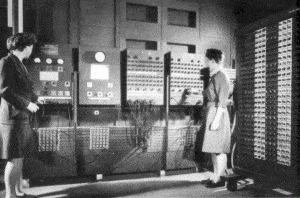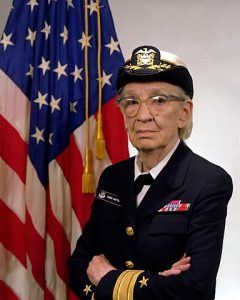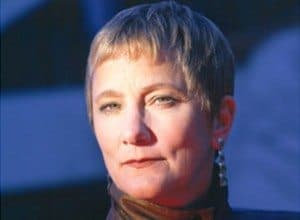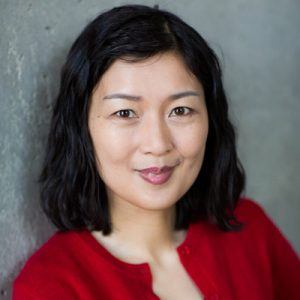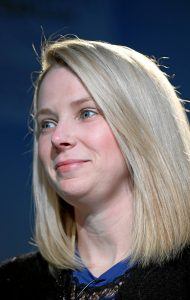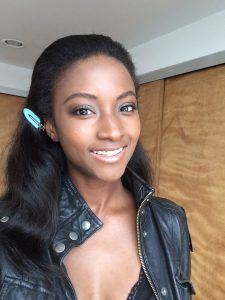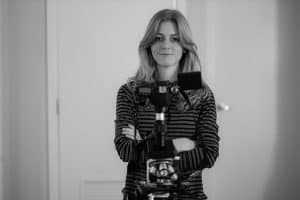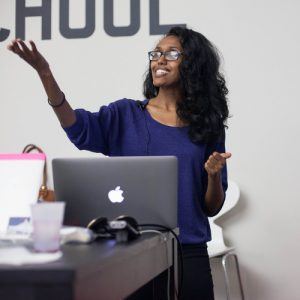Women in technology is certainly a hot topic. Discussion rages on around the fact that significantly fewer women than men are pursuing an education and career in the field of software engineering.
You may have seen the letter a Google engineer wrote about the subject. I’m not going to get into a debate here, but the news did get me thinking about the women who have made major contributions to the software industry.
I decided to take the time to do some research to learn more about the women who have made huge contributions throughout the history of programming, as well as those who are doing great work in the software engineering industry today. Some you may know, some you may not. All have made contributions that have changed the field of software engineering in a major way.
Ada Lovelace
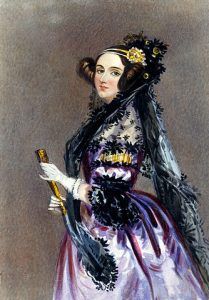
Ada Lovelace is considered the world’s first computer programmer. That’s right — the first programmer was a woman.
Lovelace worked closely with Charles Babbage and his Analytical Engine in the 19th century. She is considered the first programmer because she wrote down an algorithm for use in the Analytical Engine in order to compute the Bernoulli Numbers. Lovelace had the foresight to program a computer that hadn’t yet been built!
Lovelace accomplished even more with her vision of what computers could eventually do past just mathematics. She envisioned computers with the ability to create music and pictures.
Lovelace not only created a program, but envisioned capabilities that were not fully realized for another 100 years. Her legacy lives on in Ada, the programming language created by the U.S. Department of Defense and named in her honor.
Jean Bartik
The first “computers” were actually women. During World War II, women mathematicians were hired as “human computers” to calculate ballistics trajectories. It wasn’t until years later that machine computers were powerful enough to make the necessary calculations.
Jean Bartik was one of those “human computers” at the University of Pennsylvania. She went to work at the university in 1945 calculating trajectories. Soon after she began work, the Electronic Numeric Integrator and Computer (ENIAC) project to calculate trajectories much more quickly than any human could was announced. Bartik applied to the project and was accepted.
Bartik had her work cut out for her. She had to learn how to program the ENIAC without any guidance. Working with Betty Holbertson, Bartik worked tirelessly to study schematics and interview the engineers who built ENIAC in order to teach herself the required skills. Developers today can probably relate to this, as they still end up teaching themselves all of the time!
During the process of learning how to program ENIAC, Bartik and her team developed many fundamental programming techniques such as subroutines and nesting, things every programmer uses in their code. Bartik and her ENIAC team of women engineers developed many concepts that are still in wide use today.
Grace Hopper
Grace Hopper could certainly be considered the most influential woman in the early days of computers and software engineering.
She began her computing career working on the Harvard Mark 1 computer team led by Howard Aiken, but her biggest contribution was creating a program that turns human-readable statements (code) into machine language that a computer can understand.
Any high-level programming language, such as C++, C#, or Java, uses a compiler to do this transformation. If you have programmed, you have definitely used a compiler.
Grace Hopper had a revolutionary belief: you could write code in a language using English words and these statements could be translated into machine language by a compiler. Despite others claiming this type of action was not possible, the first compiler was completed by Hopper in 1952.
Hopper didn’t stop there, however. In 1959, she attended the Conference on Data System Languages (CODASYL). This conference led to the creation of COBOL.
COBOL was the realization of a language written with English words that Hopper worked so hard to champion. In fact, it is still in wide use today. Check out the impressive stats here.
Grace Hopper created one of the first compilers and helped to create a language that is still in use over 50 years after its creation. That is a pretty big mark to leave on the engineering community.
Anita Borg
Any discussion of women in technology and software engineering has to include Anita Borg. She was an accomplished computer scientist and also a strong advocate of women in technology.
Borg taught herself to program at her job working for a small insurance company. After working for several years, she received a doctorate in computer science from New York University in 1981.
Borg spent time working on UNIX-based operating systems. She received a patent on a technique for analyzing and designing high-speed memory systems, and then later worked on a little-known technology called email (You may have heard of it), building an email and web-based system to support virtual communities. She eventually became Chief Technology Officer of Xerox PARC.
Borg was a bold advocate for women in technology. She started the Systers mailing list in 1987, in 1994, she founded the Grace Hopper Celebration of Women in Computing, and in 1997, she founded the Institute for Women and Technology.
The Institute for Women and Technology is now called the Anita Borg Institute for Women and Technology. This organization has the goals of increasing the representation of women in technical fields and enabling the creation of more technology by women.
Anita Borg was a pillar of the women in technology community, whose influence is still felt today.
Julia Liuson
We now move into more recent contributions by women to the software engineering industry, starting with Julia Liuson.
If you are a C# or VB.NET developer, you owe quite a bit of your productivity to Julia Liuson. She joined Microsoft in 1992 right out of college and started on Access, but that is not the biggest contribution she made.
For Windows application developers, Visual Studio is one of the best Integrated Development Environments (IDEs) currently available and it is only getting better.
Visual Studio first launched in 1997 with support for Visual C++, Visual Basic, and Visual FoxPro. Over time, the .NET framework was added along with C# and several other languages. Visual Studio now supports loads of languages. Check out this article for an interesting history of Visual Studio.
Liuson was one of the original developers for the Visual Studio project and has been working on it ever since. She now captains the entire ship as Senior Vice President of Visual Studio & .NET.
How many of you realized that one of the most popular IDEs on the market, a staple of Windows development, was developed and is now run by a woman engineer?
Marissa Mayer
Yahoo! has fallen on some hard times. However, that fact doesn’t take away from the impact that their current CEO Marissa Mayer has had over her career as a software engineer.
Mayer went from a programmer to a CEO, which is certainly a major accomplishment for any programmer. However, her accomplishments as an engineer are also worth celebrating.
She started as Google’s first female engineer in 1999. She put her Stanford education to good use by coding and then leading the creation of several successful Google projects including Gmail, Google Maps, Google Earth, and Google News.
I know I depend on Google Maps quite a bit when I’m driving. Many businesses depend on Gmail for their email service. Marissa Mayer was a major part of creating these amazing services.
Lyndsey Scott
Lyndsey Scott is an actor and supermodel who works with Louis Vuitton and Gucci, and was the first African-American model to land the Calvin Klein exclusive during fashion week. She is also a computer programmer.
Scott graduated from Amherst College with dual majors in Theater and Computer Science. She has used her computer science skills to become one of the top answer-providers on Stack Overflow for iOS questions.
She has several apps in the app store (check them out here) and also devotes time to teaching kids how to code. She is CTO of Ryse Up, a company that works to connect top talent and emerging artists.
Scott breaks through the stereotypes of what a programmer should be and is a great example of the fact that no matter what you look like or do for a living, you can make an impact with technology.
Jessica McKellar
Jessica McKellar is a name you should know if you are a Python developer or a contributor to open source.
McKellar is a major contributor to the Python language and community. She is a director of the Python Software Foundation and won the O’Reilly Open Source Award for her contributions to Python. She is also a contributor to Twisted, a Python networking framework.
And if that is not enough to convince you of McKellar’s talent, she is part of three successful startups. She started as a developer for Ksplice (which was acquired by Oracle in 2011) and became an engineering manager there.
McKellar later co-founded Zulip, a chat application (similar to Slack) that was bought by Dropbox. After spending three years at DropBox, she founded another startup, Pilot, Inc.
McKellar also contributed to the Linux kernel and is currently writing a book entitled Linux Device Drivers, 4th Edition for O’Reilly.
McKellar mentors other programmers through Google Summer of Code, GNOME Outreach for Women, and Hacker School. She also founded the world’s largest Python user group. If you’re a Python developer, get to know Jessica McKellar.
Saron Yitbarek
Saron Yitbarek didn’t start out a coder, but has had a significant impact since she transitioned into one. After stints in a software consultancy and at Microsoft, she founded CodeNewbie, an ultra-supportive community of new and experienced software engineers with the mission of helping each other. The creation of this network is so far her biggest contribution to the computing community.
With what started as a weekly TwitterChat, Yitbarek’s network to help connect people new to coding has now grown to a great website with blog posts, podcasts, resources for newbie coders, a discussion board, and local meetups in five cities (Atlanta, Austin, Dallas, DC, and Philadelphia).
And the weekly TwitterChat is still going. Every Wednesday a question is posed and developers can respond with #CodeNewbies. For those of you new to programming, give CodeNewbie a look to see if it can help make you a more confident and competent developer.
Don’t Forget the Women in Software Engineering
This is far from an exhaustive list of all women who have made a significant impact in software engineering — there are many more known and unknown figures who have made important contributions.
Kimberly Bryant started Black Girls Code. If you use OAuth, Leah Culver helped to write the API specification and a Python implementation. Anna Patterson leads Google’s AI and Machine Learning efforts. Emily Ratliff is a senior director of security for the Linux Foundation. These are just a few figures making an impact: find out about more women in engineering today from this Business Insider article.
One way to help encourage women to pursue education and careers in software engineering is to bring more attention to the accomplishments of the women who paved the way for all programmers and who are doing the work today. Highlighting women working in programming can help students choose to pursue a software engineering education by showing them someone who is like them working in the field.
Women paved the way for the software engineering industry we know today and are continuing to push it forward. I’d encourage you to learn more about these pioneers in our industry.

